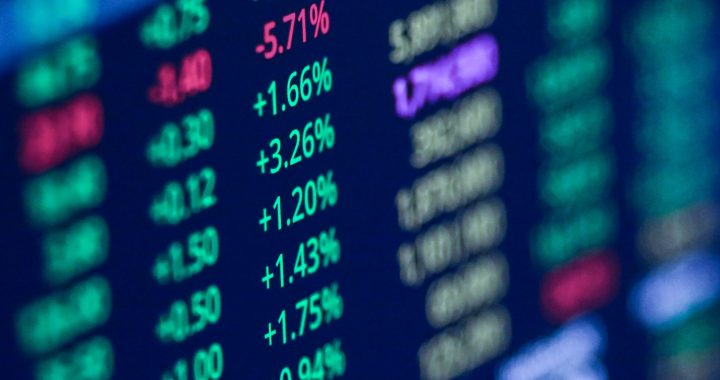This week marks a month since the Federal Election and a walloping handed to the former Coalition Government by the ALP, Greens and a wave of winning teal independents. Pre-election, I predicted a surge in popularity to Greens candidates in Queensland’s south-east which proved accurate with the party recording its strongest ever election result, including Stephen Bates taking out Brisbane. He was one of three Greens to pick up seats in Queensland including Max Chandler-Mather Griffith and Elizabeth Watson-Brown in Ryan that slid from Labor and LNP hands respectively.
Greens popularity aside, the ALP ultimately formed majority government and now has a mandate to implement its economic policy.
Ahead of the election, Labor’s now Treasurer Jim Chalmers was spruiking an economic and budget plan focused on increasing economic capacity, boosting wages, tackling inflation and bringing down cost of living. Labor made that even clearer by breaking it down into five key points:
- Invest in cleaner and cheaper energy to cut power bills, unlock investment and create jobs
- Better train our workforce to equip Australians with critical skills to address shortages
- Invest in cheaper childcare
- Upgrade the NBN to begin capturing the digital economic opportunity
- Create a Future Made in Australia to stimulate billions of dollars in private investment, secure supply chains and revitalise regions through more jobs and opportunities
Sound plan. Yes, if domestic and global market trends continue the way they are and forecasts from the Reserve Bank of Australia’s May 2022 Statement on Monetary Policy shapes up. Many of the indicators Labor will be measured against were already performing strongly. Record low unemployment since 2008, growing female workforce participation, household income expected to rise (thanks to stronger labour income, Government disaster payments and resource company dividends). Domestic demand has been strong despite growing cost of living, with about the only issue impacting demand being supply.
Labor now oversees most of the country at both a state and national level which appears to provide some level of comfort the party has the mandate for change. We have already witnessed the enaction of former Labor policies with Queensland Treasurer Cameron Dick’s announcement this week of a significant increase to mining royalties. Although Labor is keen to sway the public into thinking this is not a tax, shareholders might disagree. It’s likely we won’t know what Queenslanders really think about this until late 2024 when the next election comes around.
The real underlying question that remains is how the Federal Government will manage growing interest rates and inflation, which risks exceeding the RBA’s long-held preferred target of 2-3% and already broke the target mid-point in January 2022. In the year to March 2022 CPI jumped 5.1% due to increased construction and fuel costs. The risk of sustained high inflation will push the cash rate up and ultimately reduce economic activity, which is why its of such concern to financial markets and companies.
We’ve already seen five-year housing price growth in all Australian capital cities – Brisbane sitting middle of the field with 45% to April 2022. And the regional growth has been astonishing, up a staggering 46% across the same period compared to the capital city average of 22% and the national average of 27%. Similarly, rent inflation in Brisbane went up 14% in the year to March while Sydney was 38% – a boon for investment property owners and landlords but not so great on those in the tight rental market.
In his first post-election interview with the Australian Financial Review in Brisbane’s outer suburb Logan, Dr Chalmers conceded: “Inflation is almost out of control, real wages are the worst they’ve been for 22 years, and our ability to deal with these issues is tempered by the fact that we’d be inheriting a poor-quality budget.”
All this to say short-term inflation rises will be difficult to manage without associated wage growth, which brings us back to Labor’s plan – recovering real wages from a 20-year low point.
It’s a challenge for Dr Chalmers, whose remit is to grow the economy under with expansionary fiscal policy, albeit in a constrained government spending capacity – all in an effort to keep inflation in check In lieu of the latter, the former will require buy in – literally – from the private sector to help peg back the estimated $1 trillion additional gross debt the Federal Government will carry by 2026.
His fallback to feed the labour market, on top of planned spending increases in the education sector and creating jobs through investing in manufacturing, will be to loosen migration policy to address the skills shortage and boost productivity.
While all this spending is good, someone must ultimately foot the bill. And as mentioned earlier, Queensland Treasurer Cameron Dick who previously ruled out taxes on Queenslanders and businesses alike has managed to thread the needle with semantics. New royalties imposed on the miners announced in the Queensland budget this week are a throwback to the great big miner’s tax of previous Prime Minister Kevin Rudd and his then Treasurer Wayne Swan.
From a stock market and share investment perspective, getting the election out of the way is a positive. Number crunching conducted by AMP Capital over the past 40 years shows average share market gains in the three months post federal elections has been 4.5%, with it peaking in 1983 when the market jumped almost 20%. More influential than political stability post-election are vulnerabilities posed by ongoing concerns about inflation, interest rates and recession.
And in terms of investment more broadly, there are certainly industries and sectors likely to gain from Labor’s policy settings – clean energy, health, education, home builders and manufacturing to name a few. And although their relative performance may be good, the economic headwinds across the broader market may hinder their actual performance.
Thankfully, the Economic Society of Australia’s National Economic Panel has forecast no prolonged inflation in Australia. In fact, the majority rejected the proposition that the current combination of Australian fiscal and monetary policy posed “a serious risk of prolonged above-target inflation”. I predict the inflation numbers will start to normalise in the first quarter of 2023, simply because the rate of CPI growth cannot remain at the high levels we’ve seen by pure mathematics.
So, from the perspective of investors, job seekers and those looking for a better wage – things are actually looking pretty good short-term. And with the backing of 55 of Australia’s leading economists surveyed by the ESA, it seems our long-term position is not looking too dire either.
So over to you Dr Chalmers and friends.



